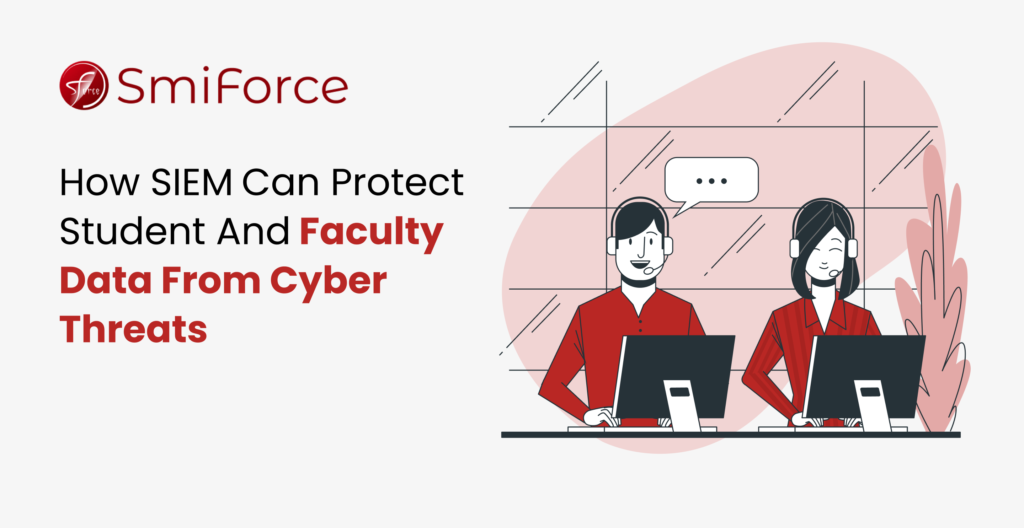
In the digital age, educational institutions are increasingly targeted by cyber threats. Schools, colleges, and universities handle vast amounts of sensitive data, including personal information of students, faculty, and staff, as well as research data and financial records. The growing sophistication of cyberattacks necessitates a robust cybersecurity strategy, and Security Information and Event Management (SIEM) solutions play a crucial role in protecting institutional data.
Understanding SIEM and Its Role in Cybersecurity
SIEM solutions aggregate and analyze security data from various sources across an institution’s IT infrastructure. This real-time monitoring helps detect suspicious activity, respond to security incidents, and maintain compliance with regulations such as FERPA, HIPAA, and GDPR.
How SIEM Safeguards Student and Faculty Data

1. Real-Time Threat Detection
SIEM continuously collects logs from firewalls, endpoints, servers, and other network devices, correlating them to identify potential security threats. This proactive detection helps prevent data breaches before they escalate.
2. Automated Incident Response
With AI-driven SIEM solutions, security teams can automate responses to cyber threats. This means that malicious activities, such as unauthorized access to student records or faculty accounts, can be quickly mitigated before causing significant damage.
3. Compliance and Audit Readiness
Educational institutions must comply with data protection laws and regulatory requirements. SIEM solutions streamline compliance by generating detailed audit logs and reports, making it easier to demonstrate adherence to security policies.
4. Protection Against Phishing and Ransomware
One of the most common cyber threats in education is phishing, where attackers trick users into revealing sensitive information. SIEM identifies anomalies in login behavior and email traffic, flagging potential phishing attempts. Additionally, it helps detect early signs of ransomware attacks to minimize their impact.
5. User and Entity Behavior Analytics (UEBA)
By analyzing normal behavior patterns of students, faculty, and staff, SIEM can detect deviations that may indicate compromised accounts or insider threats. This capability enhances security by identifying potential risks that traditional defenses might miss.
6. Integration with Other Security Tools
SIEM works seamlessly with Security Orchestration, Automation, and Response (SOAR) and Extended Detection and Response (XDR) solutions. This integration enhances the institution’s overall security posture by providing a holistic view of cyber threats.
The Future of Cybersecurity in Education
As cyber threats evolve, educational institutions must stay ahead with advanced cybersecurity solutions. Implementing AI-powered SIEM can significantly reduce the risk of data breaches and ensure the safety of student and faculty information.
Why Choose SMiForce AI-Powered SIEM, SOAR, and XDR?

SMiForce offers a cutting-edge AI-powered SIEM solution designed to protect educational institutions from cyber threats. With advanced threat intelligence, automated incident response, and seamless integration with SOAR and XDR, SMiForce enhances your cybersecurity strategy while ensuring compliance with regulatory standards.
Key features of SMiForce SIEM include:

- AI-Driven Threat Intelligence: Detects sophisticated cyber threats using machine learning algorithms.
- Comprehensive Log Management: Aggregates and analyzes security logs from multiple sources for real-time monitoring.
- Automated Incident Response: Rapidly mitigates threats through automation, reducing response time.
- Anomaly Detection: Identifies unusual behavior patterns using UEBA technology.
- Regulatory Compliance Support: Ensures adherence to FERPA, HIPAA, GDPR, and other compliance frameworks.
- Scalable Cloud-Based Architecture: Provides flexibility and scalability to adapt to evolving security needs.
Safeguard your institution today with SMiForce’s comprehensive security solutions and stay ahead of evolving cyber threats.

